Adoption of technology in construction has been slow but the industry is increasingly becoming aware of BIM’s potential in the field. BIM promises better decision making throughout the lifecycle of a project.
As BIM addresses age-old problems in a more cost-effective manner with better problem solving, more effective communication and faster project building, a few BIM challenges have been identified before implementation can be the norm.
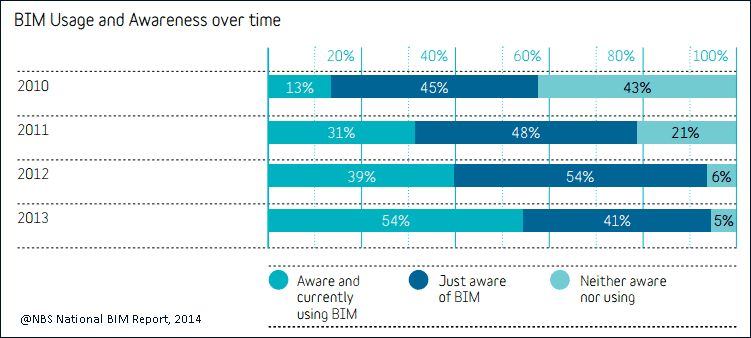
BIM recap
Building information modelling (BIM) is defined as a “process involving the structured sharing and coordination of digital information about a building throughout the lifecycle” (Eastman et al., 2011). BIM is valued as a collaborative technology that eliminates most of the communication-related delivery challenges of the industry (Navendren et al., 2014).
Over the past two decades, effective and efficient delivery have been a major challenge in the construction industry with fragmentation as a key contributor in the industry’s delivery process. Issues cited were: lack of cost and time certainty in the delivery process; quality of finished product; adversarial culture; unmanageable delegated risks and rewards (Navendren et al., 2014).
The lack of integration within a loosely planned delivery process averts any form of effective communication or collaboration.
Making this into a single well-coordinated process seems to be the catalyst towards improving the construction industry (Arayici et al., 2011). Virtual 3D communication is emerging as the new process that would revolutionize the extent of integration and collaboration with the project delivery system (Eastman et al., 2011). And that process is BIM.
BIM projections
Although BIM has been around since the 80s, it has only been popularly used in recent years (Eastman et al., 2011). In the UK, BIM is being more widely discussed because of the UK government’s construction strategy to implement BIM level 2 on all government projects by the end of 2016 in a roadmap towards universal adoption of BIM across the industry (Navendren et al., 2014).
The UK government’s expectation includes the delivery of efficiency, improved carbon performance, and up to 20% cost reduction on public projects through the systemic adoption of BIM (Navendren, 2014). The achievements of these targets are expected to be delivered via the benefits associated with BIM.
However, there are several socio-technical issues that are undermining the accomplishment of these benefits. They will be discussed in the next sections alongside the benefits of BIM.
BIM benefits
BIM’s potential is extensive. The benefits of implementing BIM in construction projects are numerous but include the following major aspects (Azhar, 2011):
- Faster and more effective processes: Information is more easily shared and can be value-added and reused.
- Better design: Building proposals can be rigorously analyzed, simulations performed quickly, and performance benchmarked, enabling improved and innovative solutions.
- Controlled whole-life costs and environmental data: Environmental performance is more predictable, and lifecycle costs are better understood.
- Better production quality: Documentation output is flexible and exploits automation.
- Automated assembly: Digital product data can be exploited in downstream processes and used for manufacturing and assembly of structural systems.
- Better customer service: Proposals are better understood through accurate visualization.
- Lifecycle data: Requirements, design, construction, and operational information can be used in facilities management.
In a case study of 32 major projects, Stanford University’s Center for Integrated Facilities Engineering reported the following benefits in statistical data (CRC Construction Innovation, 2007):
- Up to 40% elimination of unbudgeted change
- Cost estimation accuracy within 3% as compared to traditional estimates
- Up to 80% reduction in time taken to generate a cost estimate
- A savings of up to 10% of the contract value through clash detections
- Up to 7% reduction in project time
There are specific benefits to various project participants as well:
- Clients: Better requirement capturing thanks to enhanced communication with design team
- Designers: Increased clarity in design intent, easy testing of design options, and easy distribution of design documentation across the teams.
- Contractors: Access to better quality information for estimation and bidding, early involvement to contribute to constructability and effective scheduling, and clash-free construction due to ability to simulate before actual construction .
- Facilities Management: Enhanced quality of as-built and handing-over information, and easier integration into computer-aided facilities management systems for maintenance and post occupancy assessments.
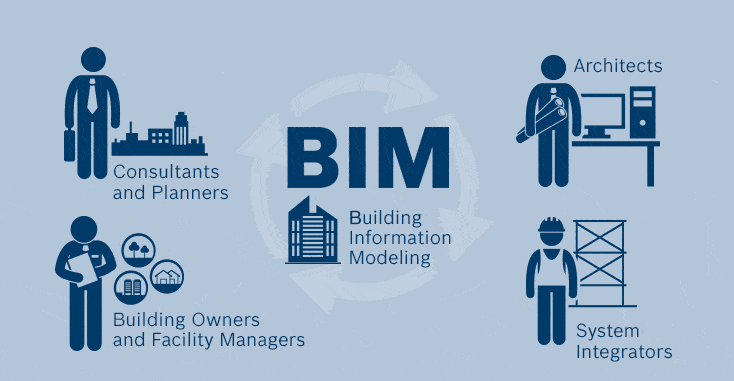
To evaluate a proposed investment, the return on investment (ROI) is usually analyzed. It contrasts the gain anticipated from the investment against the cost of the investment (ROI = earnings/cost). In a detailed cost study from 10 projects, the BIM ROI for various projects varied from 140% to 39,900%. The average was calculated to 1,633% for all projects and 634% for projects without a planning or value analysis phase.
Due to the large data spread, it was difficult to conclude a specific range for BIM ROI. Other projects measure BIM savings through real construction phase direct collision detection cost avoidance or planning/value analysis. None of the mentioned cost figures accounted for indirect, design, construction, or administrative, or other forms of cost savings as a result of BIM implementation.
In a 2014 McGraw Hill Construction BIM study, 75% of contractors globally reported a positive ROI. The actual ROI from BIM can be far greater than reported.
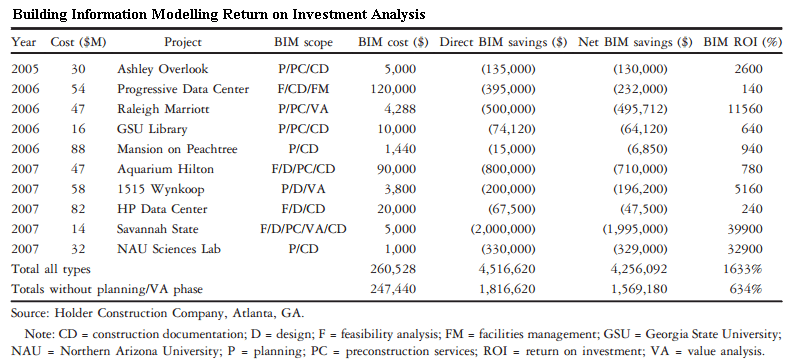
BIM risks
Risks involved in BIM implementation can be divided into two categories: legal (or contractual) and technical (Azhar, 2011).
- Legal: There is a lack of determination of ownership of BIM data and the need to protect it through copyright laws and other legal channels. There is no simple answer to data ownership as team members provide proprietary information for use in a project design that is being paid for by the project owner. When project team members other than the owner and architect/engineer contribute data that are integrated into the BIM, licensing issues can arise. Another issue is who will control the entry of data into the model and be responsible for any inaccuracies. The concept of integration blurs the level of responsibility that risk and liability are likely to increase.
- Technical: As cost and schedule are added as additional dimensions onto the building information model, responsibility for proper technological interface among different programs becomes an issue as well. Responsibility for accuracy and coordination of cost and scheduling data must be contractually addressed — the risks of using BIM are shared among the project participants along with the rewards.
BIM challenges
Despite the demonstrated benefits from numerous case studies, there still remains a few BIM challenges that continue to hinder the wider adoption and implementation of BIM. A lot of smaller companies are apprehensive in shifting to the whole BIM process.
In 2014, the National Building Specification outlined the top five managerial reasons why organizations haven’t made their move to BIM yet (Lymath, 2014).
- Client demand. 73% of smaller companies having five staff or less have been cited that there is no client demand for BIM. While the UK government is enforcing the use of BIM for publicly-funded work, clients of smaller firms don’t often make similar demands.
- Relevancy. 71% of small firms believe that BIM is not always appropriate to their typical projects. They feel that their workload is not on a complex level to warrant the use of BIM. However, it is a fact that even domestic projects can also be complex.
- Cost. Shifting to BIM does involve spending on software, training, and time. A thing to look at, though, is that the potential benefits outweigh the costs — those who have adopted BIM tend to report that the results have been better that they anticipated.
- Project size. It is falsely believed that BIM is only effective for big projects. BIM can actually work on any size from a domestic project upwards. Benefits can still be realized even in smaller projects.
- In-house skills. 62% of small contractors (with five or less staff) and 77% of firms (six or more staff) expressed that they do not have the in-house current BIM skills. However, the upturn in the industry is increasing the demand for recruitment and should be an ideal time to recruit people with necessary skills. Smaller contractors can also invest in training which would incur lower aggregate costs.
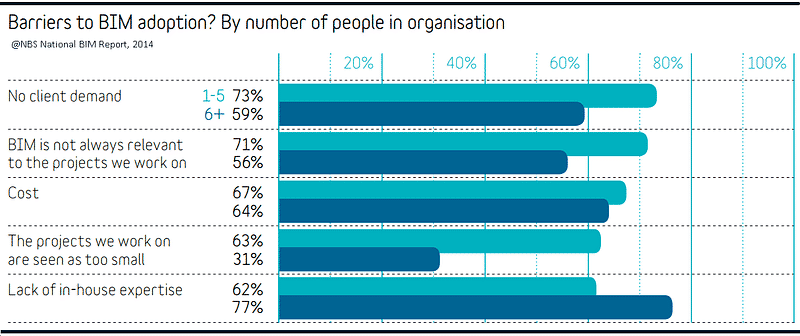
These management issues cluster around the implementation and use of BIM. There is no clear consensus on how to implement or use BIM. There is no single BIM document providing instruction on its application and use. It is imperative to standardize the BIM process and to define guidelines for its implementation.
It is also a need to outline who should develop and operate the building information models and how the developmental and operational costs should be distributed.
The technical reasons, on the other hand, can be broadly classified into three categories (Bernstein and Pittman, 2005).
- The need for well-defined transactional construction process models to eliminate data interoperability issues,
- The requirement that digital design data be computable, and
- The need for well-developed practical strategies for the purposeful exchange and integration of meaningful information among the building information model components.
Transactional business process evolution
BIM might ease the flow of information and connect processes but it will not solve the business challenges. Integrating design data in a model-based design-to-build process may eliminate potential conflicts but does not address the underlying lack of basic business process integration (Bernstein and Pittman, 2005).
Computability of digital design information
The computer-aided design (CAD) tools that the construction industry currently use create nothing but pictorial data with no computable information. These representations are meaningful when read by humans but contain little information that can be used for purposes other than plotting a drawing. For the most part, humans look at the data, interpret it, and transfer it to new applications for additional analysis.
This wastes time and creates a huge margin for error. Before the industry can fully embrace BIM, the need for computable information must be understood and the mindset should change from pictures to information models. Once the value of computable database is recognized — and computable databases are created for buildings — new forms of value can be unleashed (Bernstein and Pittman, 2005).
Meaningful data interoperability
Once business process and computability are resolved, the final prerequisite for BIM adoption is making the resulting data accessible to the relevant parties involved in the building process (Bernstein and Pittman, 2005). This idea of sharing design information is referred to as “interoperability”. The past years, BIM techniques have been addressing this problem of meaningful interoperability with various integration software that support different BIM tool formats (Wang, 2011).
Researchers and practitioners in the industry have been developing solutions to overcome these BIM challenges and other associated risks. It is expected that BIM use will continue to increase in the architecture-engineering-construction industry.
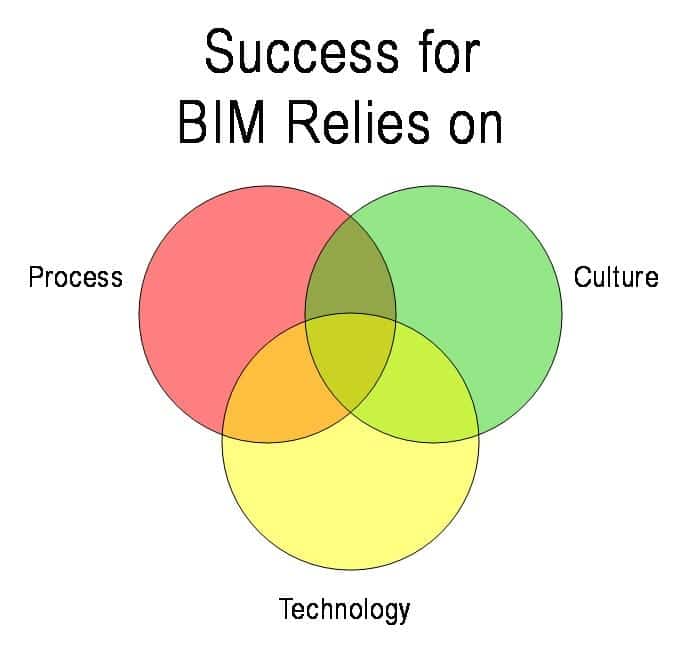
Building information modelling greatly improves the predictability of building performance and operation. It is slowly changing the architecture, engineering, and construction landscape with innovative ways to virtually design and manage projects.
As BIM use increases, so should collaboration within project teams, which predicts improved profitability, reduced costs, better time management, and improved customer-client relationships (Azhar, 2011). It has a clear potential economic benefit, as well, basing on the 634% BIM ROI case studies.
The BIM brings about a new paradigm in within the AEC — the integration of the roles of all stakeholders on a project may improve efficiency and harmony but may also present the risk of losing the important check-and-balance mechanisms in the current paradigm.
The future looks bright for BIM; it is both exciting and challenging. May the increasing use of BIM advance the industry with increased productivity and reduced project costs.
In a previous blog post, we discussed what BIM is and what it means to the current rapidly evolving construction tech sector. Along with this piece, are part of a series covering building information modelling (BIM). Supplement this with articles discussing BIM’s history, the different roles in a BIM project cycle, what are its future implications, and the common myths surrounding its use. We also have a downloadable ebook for improving productivity on the construction site to help you choose tools so you can tailor a better documentation process for your construction business.




